The island nation of Palau is located about 500 miles east of Manilla in the Philippines and about a 2 hour flight from Guam. A number of airlines fly to Palau including United, Delta and China Air. There are numerous flights from Japan. Local car rental companies maintain offices in the small arrivals lounge of the International airport. Unlike some airports where you find only major car rental companies and or more expensive pricing – these companies are local and affordable. The airport is about a 20-25 minute ride to the center of Koror.
- Ngardmau Waterfall
- Ring bubbles from a snorkeler. Photo credit: Hiroe
English and Palauan are the main languages spoken on the island. The entire population of the country is only approximately 20,000 people; the majority live in and around Koror. Koror would be considered a small town in most countries – here it is the only “city” in the country. There are no high rises (in 20 years lets hope that is still the case). Koror is home to most of the countries’ accommodation, tour operators, restaurants and general services.
There is only one main road (about 45 miles long) that circles the largest island of Babeldaob. As a result even the most directionally challenged individuals will find it a real challenge to “get lost”. Nearly all gas stations in the entire country are located in and near Koror.
Palau is an ideal vacation destination for so many reasons especially for outdoor and marine enthusiasts. People come here from around the world for the pristine aquamarine water, the islands, the diving and the marine life. Jellyfish lake is known worldwide for its sting-less jellyfish.
The longest freshwater river in all of Micronesia, the Ngerdorch River is about a 25 minute ride north of Koror. The beautiful Ngardmau Waterfall (highest in Palau) is in the northern part of the country about a 45 minute drive from Koror. An impressive capitol building featuring a 40 foot dome opened in 2006. This is an unusual location for a capitol building – one would think it would be in the center of Koror but rather it is here – surrounded almost entirely by pristine rain forest in all directions!
Palau has a history of outside influence – from Spain, Germany, Japanese and finally the USA. The island of Peleliu (1 hour boat ride from Koror) is the center of World War II in Palau and a number of WWII relics and sites can be visited there.
Lodging
Most of the lodging is in and around the city of Koror. Accommodation ranges from home-stay, to basic hotels to more private island bungalows. Visit Palau, www.pristineparadisepalau.com lists a variety of accommodation options and they maintain an office in the arrivals hall of the airport. They are happy to call hotels for you in case you haven’t made any prior reservations.
There are several places to stay on Peleliu Island. Additionally, there are two small lodges in the far north of the country one of which is the very secluded M&A Riverside Bungalows – this is a prime place to stay if privacy and a much needed escape from “everything” is what you are after. M&A features miles of empty ocean front beach, private modern bungalows, breath taking sunrises and a small self contained restaurant and bar – www.marivsidebungalows.com
Museums
Both of these museums are located in Koror.
Belau National Museum is the oldest museum in Micronesia having opened in 1955. There is much to see and read here and the highlights are the displays relating to the outside influences on the country. Large collections also include art and artifacts, natural history and various media.
The must visit Etpison Museum opened in 1999 and was founded by Shallum and Mandy Etpison. The Etpison’s are well connected in Palau; Shallum’s father was a former president of Palau and Shallum runs the local Neco group of tourism and other related businesses. Mandy is originally from the Netherlands, is an accomplished photographer, author, Managing Director/curator of the museum and Honorary Consul of France to the Republic of Palau.
This museum celebrates local artifacts and culture, ceremonial information, presents information about outside influences on the country and contains exhibits about Palau’s biodiversity. An extensive gift shop is located upstairs. Visit: www.etpisonmuseum.org
Diving
People come from around the world to dive Palau both for its diversity of marine life, extensive visibility, underwater walls, WWII history and wrecks and the amazing clarity and color of the water. A couple of famous dive sites include the Blue Holes, Peleliu Expressway – where the Philippine Ocean meets the Pacific Ocean and often features a number of pelagics – and the Blue Corner which features some of the best reef and wall diving in the world.
Two recommended dive companies are:
Fish ‘n Fins – the first dive shop in Palau – www.fishnfins.com
and
Neco Marine – one of the premier dive shops in Palau – www.necomarine.com
Attractions
There are a number of tour companies in Palau – one we used repeatedly was Impac Tours – for both their intimate knowledge of Palau’s attractions, professional staff and excellent customer service.
Jellyfish Lake – cast aside any pre-conceived notions of the dangers of Jellyfish when you visit this unique lake. But don’t yet cast away your shoes. To reach the lake there is a steep up and down climb (assisted by ropes) over jagged limestone rock. Something this worth seeing is worthy of a little sweat to get there. Over time these jellyfish have lost their ability to create painful stings as they have no natural predators in this isolated environment. Technically they do still sting but the only way you can feel it is if you give one a “kiss”. Hold its gelatinous body up to your lips and you will feel a thousand faint pin pricks – so faint they are barely uncomfortable. When you find them in the lake, you will find literally hundreds – ranging from thimble sized ones to grapefruit sized and larger. They don’t just float – they are continuously pulsating and moving under their own power.
- Photo credit: Hiroe
- Photo credit: Hiroe
The lake is stratified in layers – and about 15 meters below the surface is a lethal layer of hydrogen sulfide. You must wear life jackets and for obvious reasons, no diving is allowed.
Kayangel – this is one of the must visit regions in all of Palau – both for its remoteness and stunning beauty. Palau is remote but this region is even more so. There are less than one hundred people living here, (the northernmost state of Palau). A number of corral reefs are in the region and the fishing is excellent. For more information visit our more in depth article here.
Milky Way – this aquamarine colored lagoon is in the middle of Palau’s limestone “rock islands” and the white soft mud on the bottom is the result of years of sediment washing into the water from these islands. This lagoon is extremely popular with visitors, not only for its scenic surroundings and aquamarine water, but even more so for the mud. The main activity here is to cover yourself from head to toe in this mud – smother it over your face while your eyes are closed – cover your head with it. Rumor has it, that the mud has cleansing properties – which scientists have studied and determined to be false. Regardless, covering oneself in mud is still loads of fun! When you are ready to wash off, simply jump in the water.
Ngerdorch River is Micronesia’s longest freshwater river at 7.2 miles. Appropriately named, the Palau Jungle River Cruise company offers tours on this river by advance appointment. This is a relaxing way to see the river and the pristine rainforest. Expect to see crocodile; if you are lucky you will see an Archer fish in action. They spit water onto the muddy banks of the river to wash insects down into the water for their feeding. Sometimes they shoot water onto the boat too!
Ngardmau Waterfall is located about 40 minutes by car north of Koror on the largest island in the country, Babeldaob. There are two ways to access the waterfall once you reach the parking lot – via a very slow single engine monorail lifted just slightly above the ground or by walking. Both will probably take you around the same amount of time – 20-30 minutes. This is the largest waterfall in the country; the hike leads through the jungle – past old Japanese Bauxite mines, past a zip line, and then finally reaches the river. If your hot – which you probably are by now – take full advantage of natures deep bathing holes formed over centuries in the bedrock. Some of these holes are so deep you cannot see the bottom through the fairly clear water.
Continue a bit further and drench yourself in the refreshing massage like spray that drops 30 meters over a cliff. Are you visiting the falls with that special friend – like so many others who have visited before you? Be sure to bring a “love lock” which you can permanently lock to the “love fence”. A small cafe is located near the falls and maintains random hours.
Peleliu Island – for World War II history it doesn’t get more “real” than Peleliu Island. Some of the war’s fiercest battles in the Pacific took place on this small island and thousands of both US and Japanese troops were killed in action. Highlights include the “moving” World War II Memorial Museum, 1000 Man Cave (hand dug with picks and shovels – the floors are still littered with a number of WWII relics), both Japanese and American Memorials, the at the time coveted air strip which is now mostly covered with vegetation, several tanks, the primary landing beaches where troops came ashore, and the Japanese headquarters building. For more information visit our more in depth article here.
Rock Islands – several hundred small islands form one of the most picturesque parts of the country. This part of Palau offers spectacular beauty in the way of pure white sand beaches, the peculiar looking umbrella-like shaped islands, intense green vegetation covering these islands and the turquoise waters. There are a number of reefs in the area and snorkeling provides excellent visibility and a diversity of marine life.
More Information
Visit Palau Tourism authority maintains an office both in the arrivals hall of the airport and in Koror. www.pristineparadisepalau.com





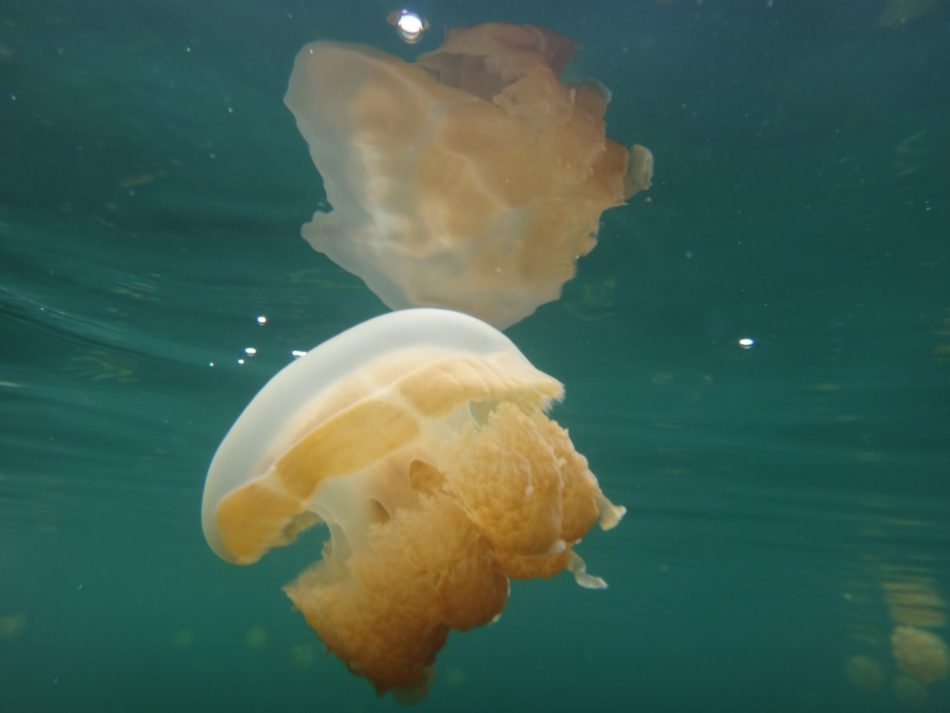
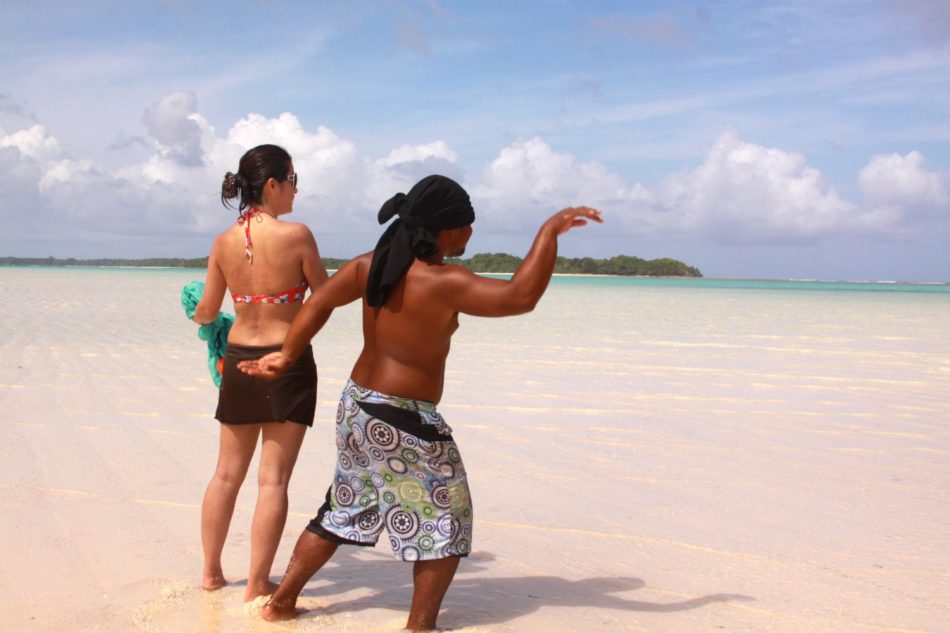

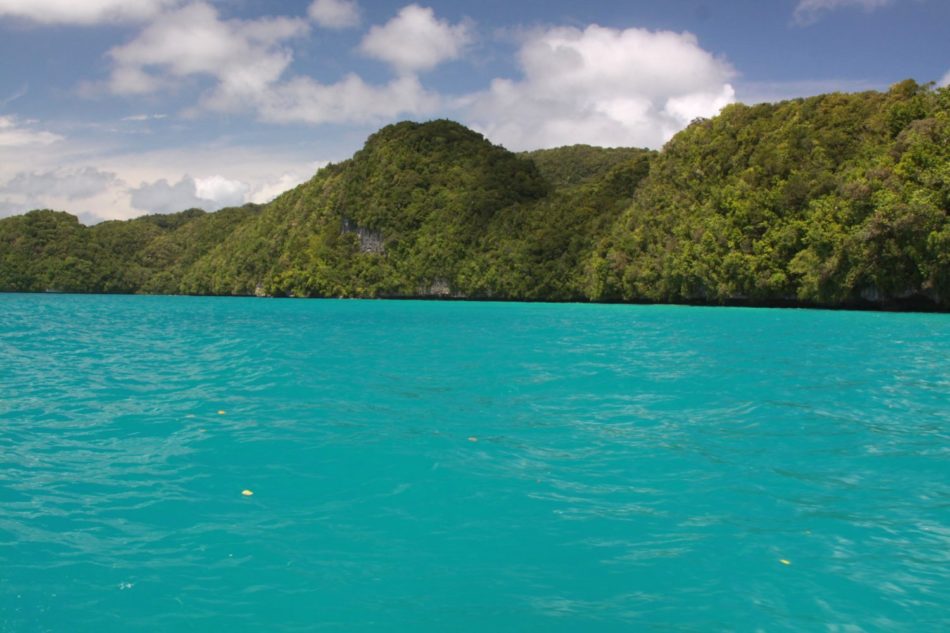


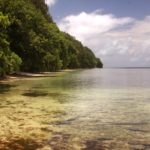
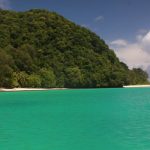
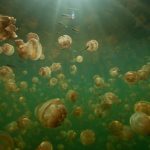
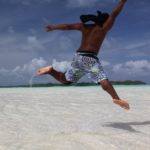
I’ve heard of the jelly fish lake but was unsure of where it actually is…. Pretty interesting place and not one many people get to.
Yea, a very unique spot. I’ve heard there are others in select parts of the world – but the one in Palau is the most well-known. If it wasn’t so expensive to get to, I’d go back in a minute!